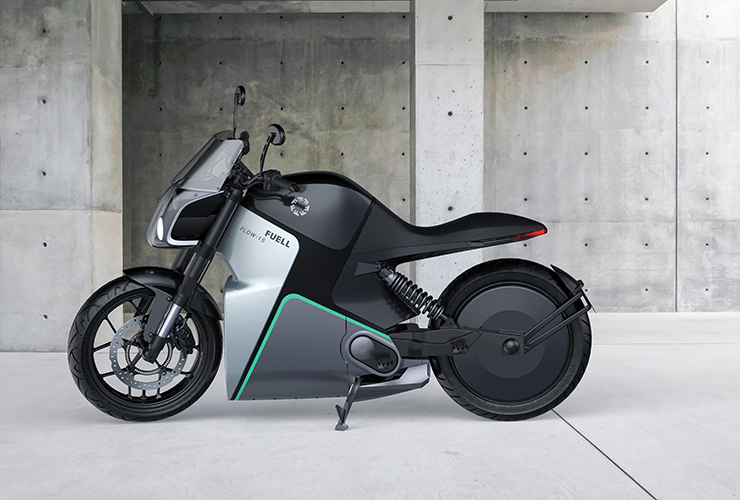A Unique Motor for a Unique Bike
We recently reported on the Fuell motorcycle and ebike. While the ebike is interesting, the electric motorcycle called the Flow is what really grabbed our attention. Erik Buell and Francois-Xavier Terny are two of the guys making this company happen, and Motorcyclist Magazine got to sit down with Terny to discuss the company.
In the second installment by the magazine about their conversation, Terny discussed the electric wheel hub motor and how it will help set the Flow apart from the competition. He discusses electric motorcycles in general, saying that there are only a few suppliers of the batteries out there and the battery on the Flow is really nothing special. What is special is the wheel motor.
The wheel motor is a different thing. Erik is at the forefront of that; it’s his pet project and he’s so excited about that. It’s about creating a powerful yet very light wheel motor that will address the issues of weight, torsion, and suspension. Fundamentally, one of the reasons for the wheel motor is that Erik has thought a lot about the wheel motor invention. The problem with the wheel motor is that it’s super heavy usually, so it can imbalance the riding of the motorcycle. Our hub motor has an incredible weight-to-power ratio.
What exactly that power to weight ratio is, is still up in the air. The company plans to unveil the stats and all of the good details on April 23 of this year. What I find interesting about the wheel hub motor is that it removes the motor from the center mass of the bike. For Fuell, this opened up 13 gallons of storage space that can be used to store whatever you want.
A Missed Opportunity?
Storage is something I’d personally love to see integrated into the actual design more often on motorcycles. However, I think Fuell may have missed an opportunity here. That’s 13 gallons worth of space that you could add more battery cells and potentially extend the range of the bike beyond what the competition is doing.
With that said, I’m just a mildly intelligent moto-journalist, so I don’t know how much additional range, Fuell could squeeze out of a battery that would fit in that space. Also, adding a battery to that space could also throw off the balance of the bikes weight and make it less enjoyable to ride. Fuell likely knows what it’s doing here, but I think the removal of the motor from the central area of the bike could open up some interesting possibilities. I can’t wait for more information about the Flow in April.



“13 Gallons” is a _hell_ of a lot of space. Enough that I’m suspicious that a decimal point was accidentally omitted somewhere. Imagine two and a half 5-gallon buckets and think about how silly big of a volume that is.
“1.3 gallons” would be a much more reasonable volume to me if I’m moving an electric motor, mounting and a gear and chain out of the way. A milk jug and some change? Yeah, that feels about right.
On reading the Motorcyclist Online article, it’s a TOTAL of 13 gallons of storage – not that moving the motor freed up 13 gallons.
That still seems… outlandishly large. The fuel tank on my FJR is half of that volume and it’s enormous. Unless there’s basically nothing behind those fairings except dead air, I don’t see how they’re getting that number.